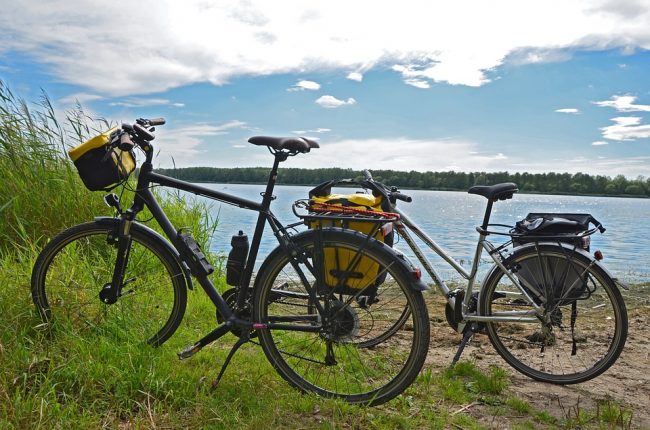Given that setting up a bike to travel is a very personal task which takes time and some tests before arriving at the perfect solution, below we propose some advice on frame, wheels, fork, gearbox and brakes.
Remember that for a cyclotourism bike the comfort is everything, without it, it will be impossible to pedal for many miles every day.
Everyone finds their own comfort in a different way. There are those who prefer SPD pedals and flat pedals. There is who have a sporting style of driving and therefore prefer a racing saddle and who, instead, drive in a more upright and relaxed way.
Only you know your needs minutely, these are simple indications.
Frame
The lightweight frame in a travel bike is a rather superfluous detail. Why? Considering that once equipped with everything to survive for a few weeks – or months – in autonomy (carrying a tent, sleeping bag, camping stove etc…) the bike also weighs 40kg, it’s not the case to talk about 500 g or less.
The important thing is that’s robust and able to cope with every difficulties, the best is perhaps the steel frame.
Wheels
The 26” wheels are a standard almost all over the world. If necessary, you will not have any problems finding spare parts.
Fork
The front and rear suspensions are designed for mountain bikes and specifically for down-hill and all-mountain disciplines, but not for traveling. For cyclotourism is preferable to a rigid fork, unless you are intended to pedal on particularly rough terrain that require a greater vibration absorption.
Gearbox and Group
Rather than performance, weight and precision, it’s useful to look at functionality – no matter mount the top range gearbox or group. Shimano is the company with the best distribution system around the world so it might be the right choice because even in this case you will not have trouble finding spare parts when needed.
Brakes
With a full load bike you need to be sure in braking in any situation: with the sun, with rain, downhill. Hydraulic brakes are great for this, very durable and reliable, as are the more modern disc brakes.
